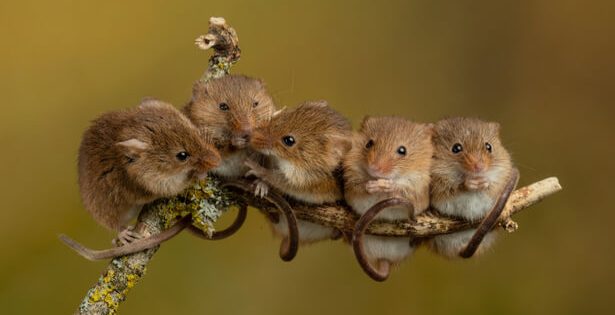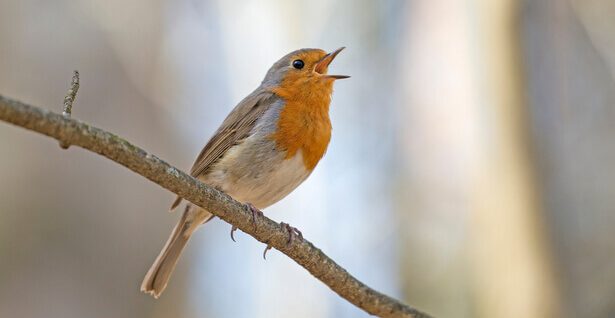If we often talk about the disappearance of emblematic species and the need to protect them, we forget that the current 6th wave of extinction also concerns the fauna and flora that surround us: our ordinary biodiversity!
The collapse of biodiversity is a phenomenon now widely known even if it is still difficult to understand. the ecological, economic and social consequences. One thing is certain, however, it is high time to get our hands dirty to limit the phenomenon and reverse the situation! Better understanding and knowing biodiversity means giving ourselves the means to better protect it. This is true for all species, even for ordinary biodiversity… Because we must not wait until it is also in danger to act.
What is ordinary biodiversity?
The term “ ordinary biodiversity » is something relative insofar as what is ordinary is not necessarily perceived in the same way by one or the other. It nevertheless remains that thewe can also define it in opposition to the ” remarkable biodiversity »: made up of plants and animals that are not very widespread, endangered or even endemic (which are only found in a specific location), often at the origin of reserves, natural parks, Natura2000 zones or other protection zones .
Ordinary biodiversity thus represents the multitude of life forms which participate in the proper functioning of ecosystems in the broad sense, whether in the present or in the future with the capacity of organisms to evolve or adapt.
From a purely naturalist point of view, however, it must be said that there really is no such thing as ordinary biodiversity because living things are so incredible as soon as we take the trouble to observe them up close.
Millions of years of evolution and an incredible mass of challenges faced in order to survive as a species to arrive at a unique form of life, there, before our eyes…
The Écrins Natural Park is home to abundant ordinary biodiversity – © Radu Razvan
Ordinary biodiversity: the emergency
As you will have understood, ordinary biodiversity, that of local plants, animals and micro-organisms, plays an essential role in maintaining the balance of ecosystems. It regulates the climate, contributes to water quality and soil fertility, and provides a natural barrier against pests. Its preservation is crucial for our food security, because it allows the pollination of crops and adaptation to climate change. The loss of this biodiversity weakens ecosystems, increasing the risk of extreme events such as floods and desertification. In addition, it is a source of medical resources and potential scientific discoveries.
Protecting this biodiversity also means preserve our culture and our connection with naturewhich has beneficial effects on mental health and well-being. Each species plays a role, and to lose one is to risk a domino effect with unpredictable consequences.
Read also: Endangered species can wait years to be protected
Ordinary biodiversity, a societal approach
When it comes to biodiversity, what is ordinary for one person is not ordinary for another. This is true to the extent that not everyone has the same level of knowledge of French wildlife, but above all because our territory is vast.
Some of us regularly come across salamanders while others see crabs almost every day. Someone will have a smile on their face when remembering the clumsy gait of a badger crossed on the side of the road in the morning on the way to work while another will keep the song of the song in mind for a moment turtledove Turkish heard earlier while drinking coffee.

Harvest rats are widely distributed across the country, but for how long? – © Captivelight
The examples are legion of these animals that some know because they come across them on a daily basis while they are not far from being exotic for others.
Act for biodiversity all around youby Jean-François Noblet
Jean-François Noblet, passionate ecologist, who summarizes in this practical guide everything that can be done concretely, each at our own level, to protect and restore nature in all areas of our daily life.
Know ordinary biodiversity to better protect it
This ordinary, everyday biodiversity, one could therefore say, is a biodiversity of which we don’t talk much. For the simple reason that we currently find ourselves in an emergency situation faced with the collapse of biodiversity in general.
If the National Action Plans (PNA) and all other measures to safeguard threatened species are essential to the process of protecting biodiversity, it is also time to act widely for biodiversity and no longer wait until this or that species is in danger to begin a conservation process.
That being said, the task is simply immense, because without data, without information provided on the species, it is impossible to anticipate the problems that they are likely to encounter.

A very common bird in our latitudes, the robin sometimes invites itself into our gardens – © Ihor Hvozdetskyi
Where are they distributed in the territory? What are the threats weighing on them? What is their behavior, their mode of reproduction or their diet? So many questions and many more to which we sometimes have no answers, because, before our eyes, they are so ordinary that “ someone else must know ».
We can all do something, be the flag bearers of these species that we observe day by day. We can and must have better knowledge of these species: this will undoubtedly be one of the keys to their preservation.
In this new series “ Let’s protect our ordinary biodiversity “, we will give you over the coming weeks, concrete ideas to understand, observe and help protect the wild animals that inhabit our countryside, forests, coastlines, mountains… Starting with the Polecat, the Beaver, the Badger or even the beautiful Hermine and the Green Tree Frog! And many other ordinary, but fascinating species to follow…
Article updated
consoGlobe also recommends…
Source: www.consoglobe.com


